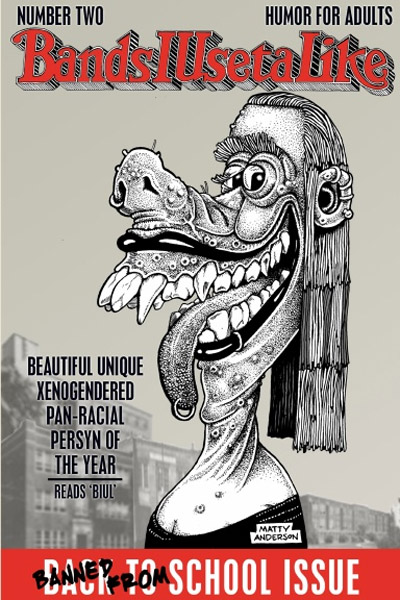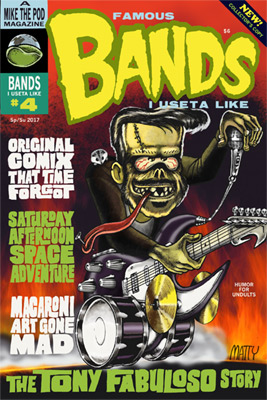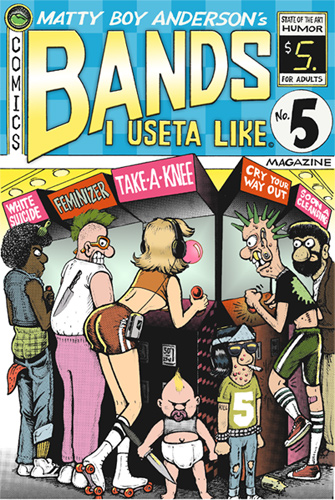
My personal credentials for this review are as follows:
- I have been a fervent aficionado of the series The Sopranos since it first aired on HBO in the 1999. I’ve seen most episodes more than twice, and some scenes dozens of times. My dad and I used to talk about it for hours on the phone.
- My dad was born in Newark.
My memory of the final season of The Sopranos is also quite fresh, because get a load of this- I only saw it for the first time this year. (I didn’t have HBO when it was new, and I never had easy access to it until recently.)
As soon as information was available on a Sopranos prequel, I devoured it. I was one of the first people to work out that the “many saints” in the title referred to the Moltisanti family; I mean, you folks never sat and thought about character names?
So- ya think I’m qualified?
While I don’t think that Many Saints of Newark will cause the critical donnybrooks that Scorsese’s The Irishman did, if you’ve seen the movie, you no doubt have opinions about it. As such, this “review” is intended for people who have already seen it, and contains spoilers. [SPOILER: It actually really doesn’t.]
So right off the bat in this white-hotly anticipated film, director Alan Taylor makes what I would call a bold choice. Two, actually. The easier of the choices to swallow is the presence of narration, something the original series never utilized. We hear the voices of the dead as we pass their graves, telling their own stories, with full knowledge of their future fate. As the camera alights on the familiar memorial of Christopher Moltisanti, we hear Michael Imperioli in character, and he even knows who killed him, where, and how.
It’s like a step further from Nicky Santoro in Casino, right? It also helps introduce characters more easily, since we’re confined by the time constraints of a movie rather than a series. Also, because Imperioli is speaking directly to the viewer in character, it feels like he’s showing you a movie based on his family history, which if you’re a follower of the original show, is pretty fuckin’ meta.
As for the other bold choice; for the film’s first few moments, I thought I ripped the wrong file walked into the wrong theater ahem. I thought I walked into a theater that was showing a remake of Stephen King’s Pet Sematary, yeah, that’s the ticket.

In rewatching this (ahem, theater), I find myself won over more by the narration than I was at the outset. It’s creepy as fuck. It’s like you’re sitting in a room with a dead man.
Chrissie introduces us to his father, “Gentleman Dick” Moltisanti (Alessandro Nivola), in Newark of 1967. He is already a father figure to young Anthony Soprano, more so than his own father “Johnny Boy” (Jon Bernthal; not the best fit, and underused), who’s about to be sentenced to four years in Rahway State Prison.
Okay- permit me an aside here.
Something that too often is forgotten: these people are ghouls. If you sit and notate the events in the life of almost any Sopranos character, you will remember that these people are the worst that Newark, NJ has to offer. That is the internal irony of the titles; sopranos, saints. Almost all of these people, as I’m sure you’re aware, are so shitty that they wind up dead sooner or later.
My point is, don’t complain when it dawns on you that Tony Soprano and Dickie Moltisanti are even scummier than you thought they were.

Once the main players are established, we get into the internal dramas of the Moltisanti family, when patriarch “Hollywood Dick” returns from Italy with his comare, Guiseppina. It’s never fully confirmed outright, but if you can’t work out that Guiseppina is Chrissie’s mother within seconds, you’re not reading this because you don’t care that much about The Sopranos. If you ever wondered where the hell Chris’s shnoz came from, now you know.
Anyone fearful of inaccurate portrayals of well-known characters needn’t be. Younger versions of Tony, his parents, his sister Janice, his uncle Junior, and made men like Pussy Bonpensiero are all recognizable at first blush, like you’re actually watching old footage. Although Dickie is a relatively new presence, you can clearly see shades in him of Richie Aprile, and his future son Christopher.
Vera Farmiga and Corey Stoll star respectively as Livia and Corrado “Junior” Soprano, and give performances that indicate they are more than familiar with the concept of “internet backlash”. Both are pitch-perfect, and if anyone was worried that they wouldn’t say their catchphrases, don’t be. Junior even gets both of his in. Like I said, the folks involved with this production were relatively chary when it came to pleasing an audience, particularly an online one.
Speaking of which, not only is younger Silvio Dante spot-on, in the film’s best inside joke, you see his hair before and after the release of Coppola’s The Godfather (1972).
Ray Liotta, somehow, pulls out a unique portrayal of yet another mobster (see him as Roy DiMeo in The Iceman), plus a surprise character that actually isn’t a huge surprise if you’re familiar with Moltisanti family genetics. Not only this, but Liotta caps off another classic Liotta-laugh to bookend the oft-memed one from Goodfellas, at 12:37. Any time we get to watch Ray Liotta laugh his ass off is a gift.
I presumed much hay would be made of the subplot of black former crew associate Harold McBrayer (Leslie Odom Jr.), and that contemporary racial issues would be awkwardly shoehorned in. I was pretty much completely wrong; new characters like Harold prove to be important not just to the story, but to the overall accuracy of the period. Race relations in Newark circa 1970 were rather horrific, and there are many examples of Sopranos characters being definitively, cruelly racist. As it turns out, and I don’t want to spoil it for anyone, but a major piece of Sopranos history has always been a bold-faced lie that Tony Soprano told us all a long time ago. Chris, too.
I think the fact that I’m reconsidering spoiling key points of this movie, and only talking about it superficially, is a testament to this movie being better than I first gave it credit for. I could see discussing this movie with my dad, or other Sopranos enthusiasts, and really enjoying the experience. There are layers here being overlooked at the present moment, because viewers always rush to judge now, and blogging is actually mistaken for a job.
So, I’ll just get the superficial matters out of the way. First off; you might hear some grumblings about Billy Magnussen as Paulie Walnuts. Granted, he doesn’t have the immediate recognizability of most of the cast. But consider this; remember Rip Torn? Mercurial old-school actor, booming basso voice, liked to tipple a bit too much? You might know him as “Zed” from Men In Black.
Take a minute and search out “the Maidstone fight” on YouTube. It’s Rip Torn and Norman Mailer in the Hamptons of the late 1960’s, trying to murder each other. See that tall skinny guy with the tremulous voice, attacking with a hammer? That’s Rip.
Now look up the 1972 Rip Torn movie Payday, where he plays a hulking degenerate who can sing country music in a deep, sincere tenor. Same guy. What happened?
I’ll tell you what happened; in The Many Saints of Newark, you see the genesis of Corrado Soprano’s eventual drug trade (up to and including kingpin Frank Lucas). You see him slip and fall, ruining his back and necessitating future prescription drug dependency. And when you see Paulie Walnuts, you see him before he became a raging drug addict. It implies an entire behind-the-story struggle that we never knew about, all from comparing the faces of two different actors. Suddenly it feels like another layer is peeled back, revealing potential for future dramas.
Think about the lives we know these characters led. You ever see those photo charts, that show the effect of drugs and alcohol on human faces? How many times do you think a guy like Paulie Walnuts gets punched in the face in his life?

Okay- on to, forgive the phrase, the elephant in the room. Teenage Tony Soprano, played by the late James Gandolfini’s real-life son, Michael.
I have one word for the experience.
Eerie.
Because most of us have never seen or heard of Michael Gandolfini, our only point of reference is his dad as Tony Soprano, and BOOM. The eyes are completely unmistakable. You can see the beginnings of adult Tony’s physical stature, how he’s just starting to come out of his shell. You can see how his mother creates the need for therapy in Tony, firsthand. You can see her effect on his posture.
If only there were more!
You see, this isn’t Tony Soprano’s story; it’s the Moltisanti’s. Tony already had like, a six-season show! So what if it never ended!
There are rumors of a sequel to this film, possibly with Terrence Winter (Boardwalk Empire, The Wolf of Wall Street) scripting, and Tony in his 20’s. Fingers crossed, I say.
Around the halfway mark of the two-hour runtime, Michael Gandolfini takes over as teen Tony. If you’re feeling cynical, one of his early scenes is kind of a groaner, foreshadowing Christopher’s future death at the hands of Tony Soprano. It does feel a bit like “fanservice” kloodged into a scene for the teaser. Truthfully, it’s not bad at all (but damn does Tony’s dad ever look distractingly like Fred Ward). And it never hurts to throw the fans some red meat at halftime.
I confess I initially bristled at the Black Power elements of Harold McBrayer’s subplot, because frankly after the last few years of progressive over-saturation in media I’ve been over-conditioned to smell a rat. Nevertheless, Harold’s radicalization feels genuine enough, because as we saw in the Sopranos series, aside from Tony’s future daughter Meadow, these folks do not like black people. None of them are shy about saying so either, which makes the Black Power stuff easier to swallow; these are folks who will kill, maim, or frame black people without a second thought. We often see them do it. So it didn’t surprise me when they started dropping ear-searingly racist epithets. It’s consistent both with the characters and the setting. (Also there’s a pretty good Last Poets bit in the bargain.)
Dude; it’s Newark. I know you’ve never been there, but have you ever seen it from the air, like from a plane flying safely over it? Newark, NJ looks like a place that would scare Mad Max. It’s known across the country as a repugnant shit hole even though it’s in the same state as Paterson and Camden (aka “Tartarus”). Just imagine what the criminal underworld of that cesspool could be like, what kind of subhuman dregs would live that life. How their kids would act, think, and behave.
The inclusion of real-life drug trafficker Frank Lucas seemed a little strange to me; was there ever a time when the series referenced historical people? It makes sense in context, and I’m not saying that mixing history with fictional characters is necessarily a bad thing, I just don’t recall the series ever doing it. [EDIT: Frank Sinatra Jr. was present at a card game, Nancy Sinatra sang as herself to Frank Vincent, and I think one or two real-life Jersey pols played themselves.]
There’s a subplot where Tony tries to get Dickie to convince his mother to start taking the (real) prescription anti-depressant Elavil that some might complain goes nowhere (upon repeat viewing, I realized this was to falsely paint Dickie as a junkie, when the pills are found on his corpse). Again, this movie feels like the first of a series, or a trilogy. Elements are set in place that may only exist to set things up later, or to refresh a familiar anecdote. We see Tony with his beloved boyhood dog (remember?). We see Tony’s father shoot his mother in the hair, and it happens so spontaneously I forgot I’d heard the story before. We see why Tony married Carmela De Angelis.

Honestly, I warmed to this film much more on second viewing. Now that I knew what to expect (and what not to), the movie flowed more smoothly and humorous moments were revealed that I’d missed on the first watch. A lot of new things bubbled up; enough to bloat this article up to Boogie proportions as I futilely tried to notate or riff on them all.
Although it does at times fall into the traps that so many prequels do (obligatory references, excessive foreshadowing of events only we know, heavy adherence to previously established character traits and idiosyncracies), I feel that The Many Saints of Newark stands well enough on its own, thanks in large part to the performances. It is at heart a companion piece to The Sopranos, and like that legendary show, it favors repeated viewings. My opinion of the movie improved considerably once I could savor it better with another round.
There are certainly aspects you will hear people bicker about for a while; I myself wasn’t super crazy about the very end, with the pinky swear, but then I always hated and skipped the Sopranos theme song, so that colored my judgment. If you’re truly a Sopranos fan, I can’t imagine that you wouldn’t find a lot to like here. You get to see the horrendous influences that shaped a notorious amoral mobster. Alessandro Nivola’s portrayal of Dickie Moltisanti will go down as one of the greatest one-and-done degenerate mobster villains. He is murdering garbage, and yet you see the charisma that drew people to him.
In case you think my initial fears of woke fuckery were unfounded, stay in your seat until the absolute very end of the credits, so that New Jersey can wave their virtue in your face. Fear not; the crew of your favorite gangster murder show was both diverse and inclusive, as though this makes a difference to anyone alive or dead.
Is it worth seeing? Yes. There are many Moltisantis, they are all interesting, and holy crap, are they ever the uber Newark scumbags you knew they were and more. See the movie for the Moltisantis, and you won’t be disappointed. See it for “The Young Tony Soprano Chronicles” and you will be (until you watch it again, and you realize you were focusing too much on Michael Gandolfini, when there’s another actor playing Tony at age 8 up to that point).
That’s my recommendation; if you hated this movie or were disappointed by it, see it again. I think you’ll be surprised, especially if you know the original series. Its simplicity is an appropriate deception. You have to look deeper.


















You must be logged in to post a comment.